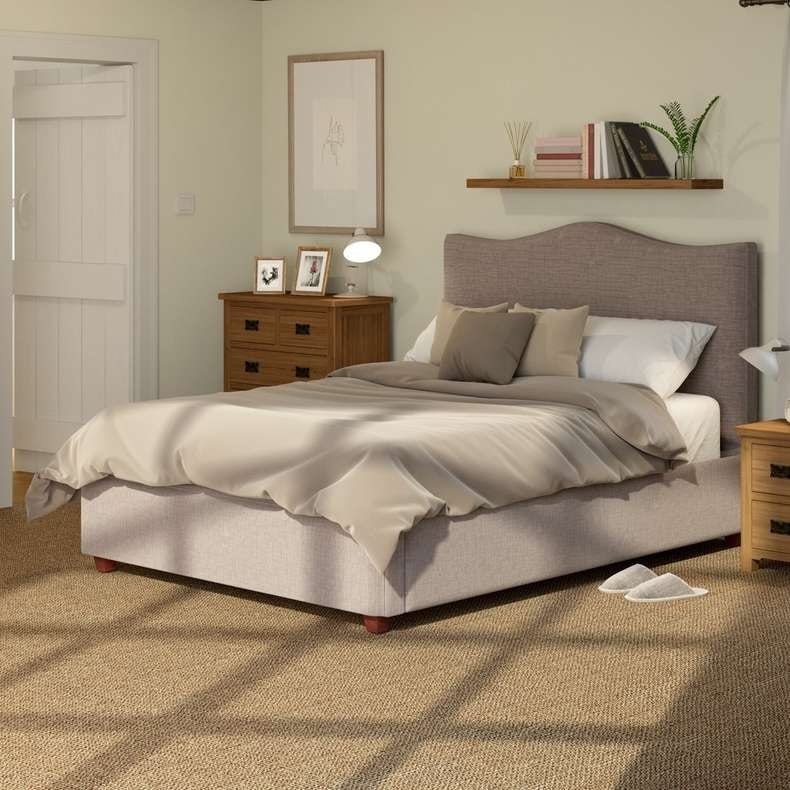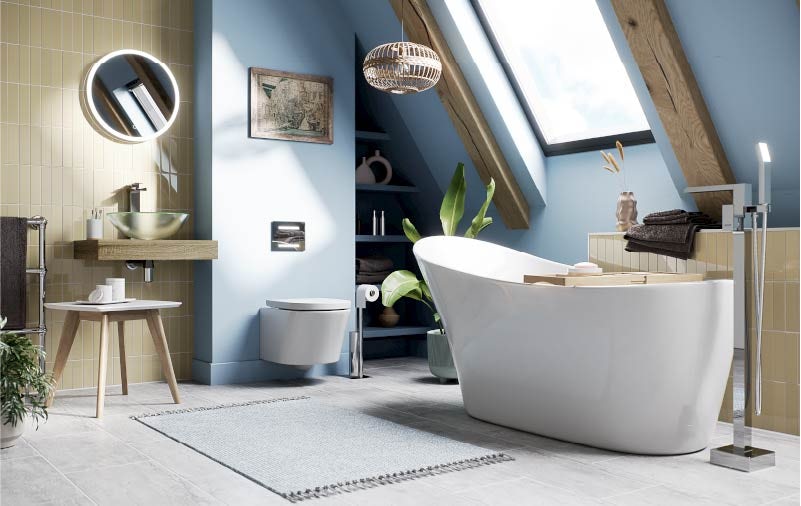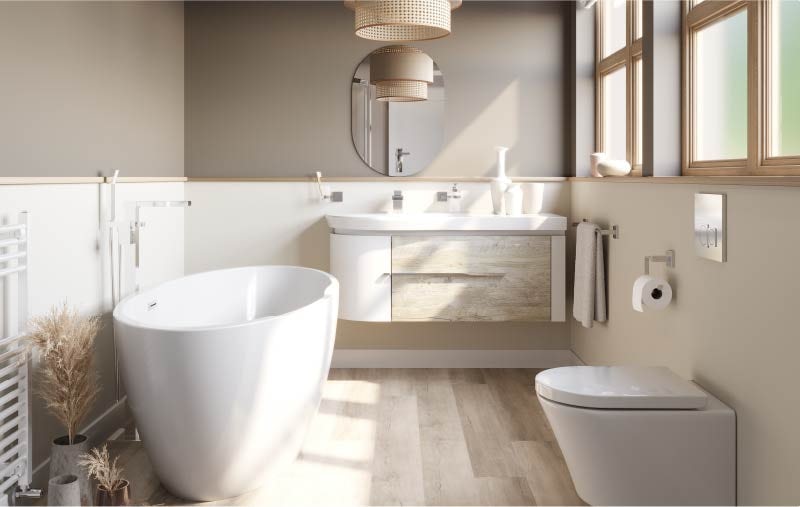If you've already bought specialist anti-mould paint for your bathroom, is there any problem using it in your bedroom too? We found out...
In today's modern homes, having 1 or even 2 ensuites has become quite common. Although these toilets may not be used as frequently as the main bathroom, the introduction of hot showers and steam can still create a humid environment that can affect the walls and ceilings. To combat this, it's essential to find a paint that is specifically designed for the bathroom, ensuring long-lasting results without the worry of flaking or unsightly mould.
You may have come across the term "specialist bathroom paint" while exploring paint options for your refresh. And you would be correct in thinking that it differs from other types of paint used in bedrooms or kitchens. Bathroom paint, also known as "toilet paint," is typically oil-based and formulated to resist mould build-up. Its primary purpose is to be used on bathroom walls and ceilings, hence the name "anti-mould paint."
In our informative guide, we'll delve into why purchasing bathroom paint is crucial, how it compares to regular paints, and whether it can be applied in the bedroom as well.
Why should you invest in bathroom paint?
Bathrooms are prone to dampness, making humidity the top concern when applying a fresh coat of paint to your walls. Moisture affects your bathroom walls in various ways. Steam from hot showers and splashes from the basin, bath, or shower can leave the walls moist.
If moisture seeps beneath the paint and reaches the plasterboard or cement surface, the outer layer can become damaged, leading to flaking paint and mould growth. Bathroom-specific paint, available in a range of colours and finishes, provides a notable advantage. While bathroom paints may have smoother or plainer finishes, regular paints come in various textures and finishes.
Understanding different paint finishes
When it comes to paint finishes, it's essential to understand the terminology:
Flat finish: This offers a lovely matt appearance and works best in low-traffic areas where the walls are rarely touched. However, flat finishes tend to absorb moisture, making them unsuitable for bathrooms. They are ideal for hallways and dining areas, as well as bedroom walls, thanks to their low glare and sheen.
Eggshell finish: This type of finish has a slight sheen and is best suited for areas with less moisture. It's easier to clean and scrub than flat finishes.
Satin finish: Satin paint is commonly used for bathroom walls as it offers a little more sheen than eggshell finishes. It can withstand reduced moisture levels while maintaining a pleasing appearance.
Semi-gloss finish: Ideal for any type of bathroom, this finish effectively repels moisture and has a more subtle sheen than high-gloss paint.
High-gloss finish: While high-gloss paint is durable, it is not recommended for large wall surfaces. It is better suited for smaller areas such as trims and cabinetry.

Bathroom paints vs. regular paints: What you need to know
Bathroom paints are formulated with high-quality binders that solidify into a tight barrier as they dry. This prevents the paint from absorbing water from the air. As a result, the paint is less likely to deteriorate or develop defects such as peeling or yellowing caused by moisture.
In the past, glossy paints were used to combat bathroom dampness. These paints improve the texture and appearance of bathroom walls but do not prevent mould growth. However, they make cleaning the typical damp stains found in bathrooms much easier.
It's worth noting that bathroom paint often contains mildewcide, a chemical that helps prevent mildew formation. While mildewcide temporarily inhibits mildew growth, over time, mineral deposits left behind from steam can become a food source for mildew. Regular cleaning with bleach-containing products is recommended to maintain a clean and mould-free bathroom.
Identifying suitable paints for bathrooms
Interestingly, even the names of interior home products are shifting away from explicitly mentioning "bathroom paint." Many reputable brands prioritise premium paints that combat moisture and offer durability throughout the entire house. These paints are similar to standard interior paint but often have added antibacterial properties. Smooth coatings, which are porous and retain moisture, are not recommended for humid environments. Hardwearing paints with glossy coatings effectively repel water and are more suitable for bathroom walls.
Bathroom paint costs compared to regular paint
Bathroom paint prices typically fall within the higher range of standard paint prices, excluding expensive, high-end options. You can expect to pay a similar or slightly higher price than quality conventional paint, with prices often around the £20 to £30 mark for a 2.5 litre tin (compared to roughly between £10 to £20 for regular interior paint) The advantage is that high quality bathroom paint is specifically designed to withstand humidity and dampness. In most cases, applying 2 coats of paint requires less than a litre of paint, even in small spaces.
So, can bathroom paint be used in a bedroom?
The short answer is yes, bathroom paint can be used in a bedroom. However, this often comes down to a simple matter of choice and cost. If you have paint leftover from a bathroom refurb project, there’s no reason why you can’t use it in your bedroom. However, if you’re buying from scratch, it’s worth choosing a standard home interior paint. This may provide you with more options when it comes to colours and finishes, and will save you a few pennies too.
Bathroom paint ideas and advice
Selecting the right paint for your bathroom is crucial for maintaining its appearance and preventing issues such as flaking or mould growth. It's important to consider more than just looks when making your decision. By understanding the various paint finishes and the specific qualities of bathroom paint, you're one step closer to achieving a successful paint job for your bathroom.
At Victoria Plum, you’ll find a wide range of inspirational articles and handy advice on choosing the right colours for your bathroom. From small bathroom colour ideas to the latest colours of the year, discover the perfect colour palette for your space. And, if you’re looking to hone your interior design skills, why not learn how to use a colour wheel to create amazing colour combinations for your room?
If you’re specifically searching for advice on paint, why not check out the articles listed below?









